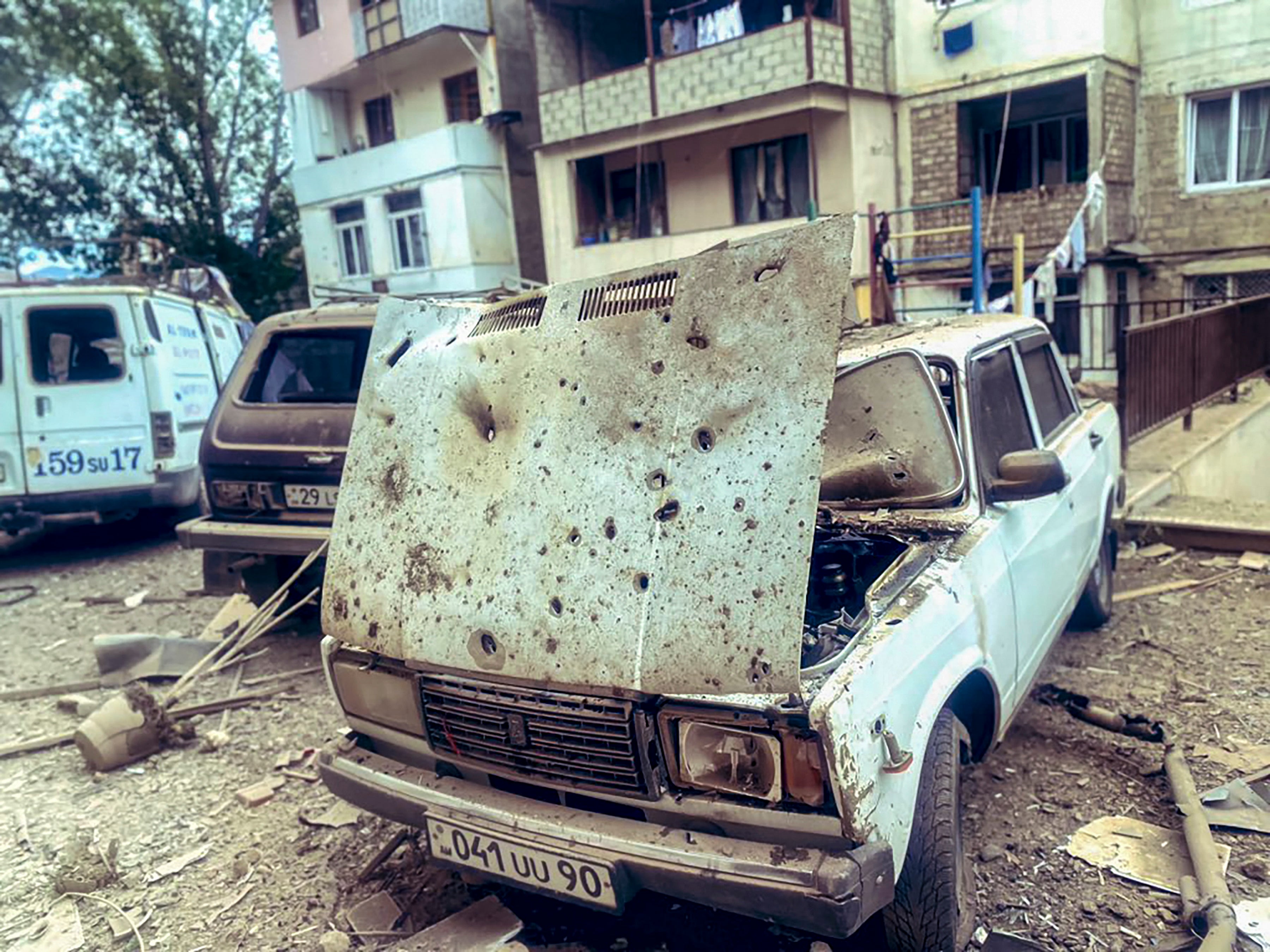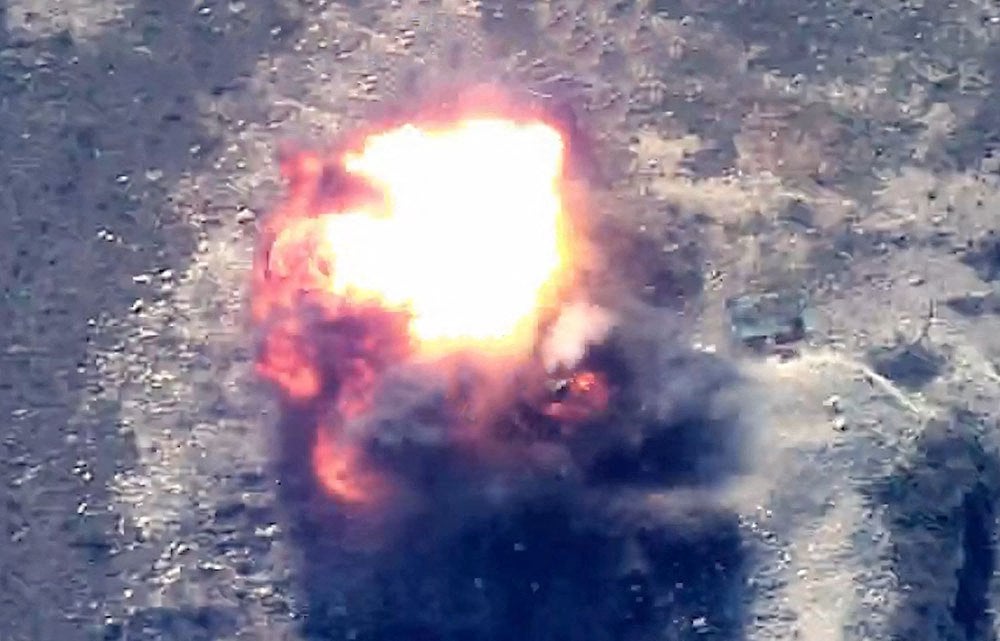Ceasefire agreed after Azerbaijan unleashes military strikes in Nagorno-Karabakh
Azerbaijan earlier said it would not stop artillery bombardment in disputed region until Armenian forces ‘surrender’

Your support helps us to tell the story
From reproductive rights to climate change to Big Tech, The Independent is on the ground when the story is developing. Whether it's investigating the financials of Elon Musk's pro-Trump PAC or producing our latest documentary, 'The A Word', which shines a light on the American women fighting for reproductive rights, we know how important it is to parse out the facts from the messaging.
At such a critical moment in US history, we need reporters on the ground. Your donation allows us to keep sending journalists to speak to both sides of the story.
The Independent is trusted by Americans across the entire political spectrum. And unlike many other quality news outlets, we choose not to lock Americans out of our reporting and analysis with paywalls. We believe quality journalism should be available to everyone, paid for by those who can afford it.
Your support makes all the difference.Azerbaijan and Armenian forces have reached a ceasefire agreement to end two days of fighting in the separatist Nagorno-Karabakh region, which has been a flashpoint for decades.
The ceasefire, proposed by Russian peacekeepers, means separatist forces in the region will have to disband and withdraw all heavy weaponry.
It comes after Azerbaijan demanded the total surrender of ethnic Armenians in the region.
Azerbaijan’s defence ministry said it would not stop artillery and drone bombardment of the region until Armenian armed forces “lay down their weapons” and “surrender”, despite calls from the US and Russia for calm.
The country began what it called an “anti-terrorist” operation on Tuesday, claiming four of its soldiers and two civilians died in landmine explosions in the region.
Now, at least 32 people are reported dead and more than 200 wounded after Armenian officials said the region’s capital Stepanakert and other villages came under “intense shelling”.
On Wednesday, Russia and America condemned the “bloodshed” and called for an “immediate” end to hostilities between Azerbaijan and Armenians in the contested region.
The region has long been disputed. Armenian ethnic separatists began publicly demanding independence from Azerbaijan in 1988, as the Soviet Union headed towards collapse. At the time the region was known as the Nagorno-Karabakh Autonomous Oblast.
After a separatist war in 1994, the territory remained under ethnic Armenian control. But Azerbaijan regained parts of Nagorno-Karabakh after a six-week conflict in 2020.
That war ended with an armistice which placed a Russian peacekeeper contingent in Nagorno-Karabakh. But Azerbaijan alleges that Armenia has smuggled in weapons since then.
Armenia’s foreign ministry denied that its weapons or troops were in Nagorno-Karabakh and called reports of sabotage and land mines in the region “a lie”. Armenian prime minister Nikol Pashinyan alleged that Azerbaijan’s main goal is to draw the two countries into conflict with each other.
The conflict has long drawn in powerful regional players, including Russia and Turkey. While Turkey threw its weight behind Azerbaijan, Russia has taken on a mediating role and brokered the armistice that ended the 2020 fighting.

On Wednesday, Ruben Vardanyan, former head of the breakaway region’s government, claimed “close to 100” had been killed, and hundreds more injured. Neither claim has been verified.
Azerbaijan said it was only targeting military sites, but significant damage was visible on the streets of Stepanakert, with shop windows blown out and vehicles punctured, apparently by shrapnel.

The region’s military said Azerbaijan was using aircraft, artillery and missile systems, and drones in the fighting. Pictures showed Stepanakert residents hiding in basements and bomb shelters, as the fighting cut off electricity.
Food shortages persist in the area, with the limited humanitarian aid delivered still not distributed due to the shelling.
Nagorno-Karabakh human rights ombudsman Geghan Stepanyan said on Wednesday that 32 people, including seven civilians, had been killed and more than 200 others were wounded.
The Azerbaijani Prosecutor General’s Office said Armenian forces had fired at Shusha, a city in Nagorno-Karabakh under Azerbaijan’s control, killing one civilian; the claim could not be independently verified.
Russia’s defence ministry said its peacekeeping contingent had evacuated more than 2,000 civilians, but did not give details on where they were taken.



Join our commenting forum
Join thought-provoking conversations, follow other Independent readers and see their replies
Comments